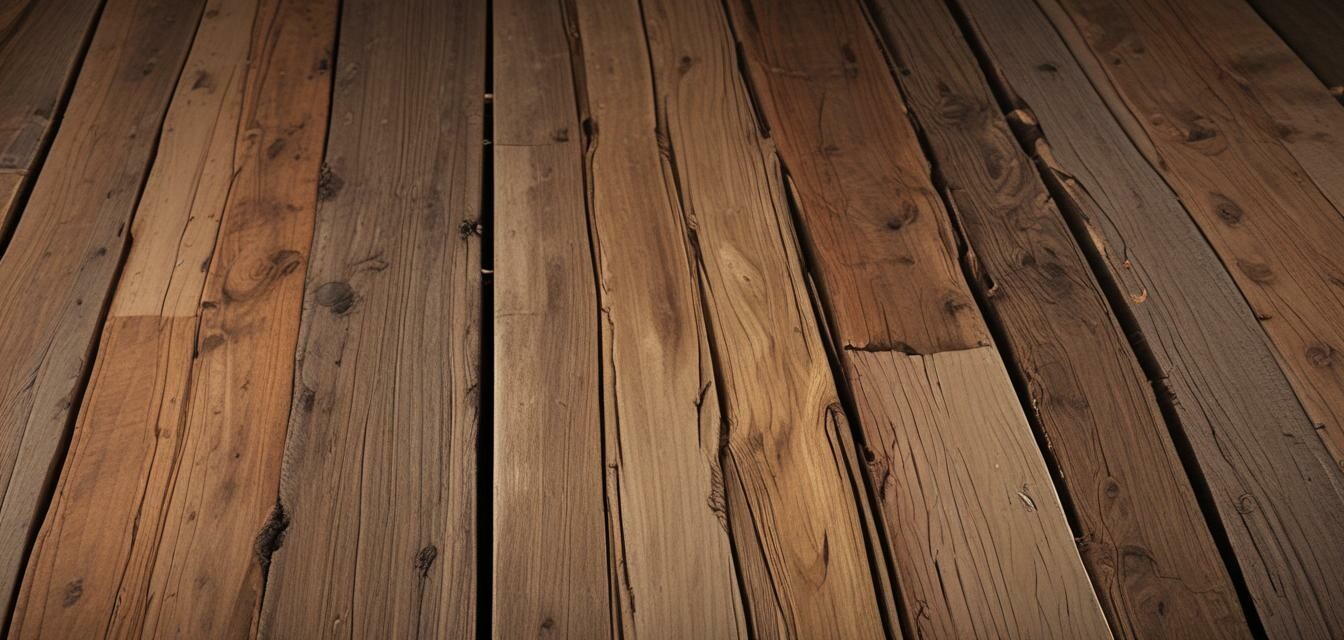
Why You Should Choose Reclaimed Wood for Your Projects
Key Takeaways
- Reclaimed wood reduces waste and promotes sustainability.
- Offers unique character and history to any project.
- Durability and quality often exceed new lumber.
- Can be cost-effective compared to new wood.
- Supports local economies through responsible sourcing.
In recent years, reclaimed wood has gained significant popularity for various projects, from furniture to home décor. Its unique beauty and sustainability benefits not only enhance the aesthetic of your space but also contribute to the health of our planet. In this article, we'll explore the advantages of choosing reclaimed wood for your projects and how it encapsulates a sustainable practice that aligns perfectly with your values.
The beauty of reclaimed wood
Reclaimed wood is timber that has been salvaged from old structures, furniture, and other sources. It comes with stories and character that can transform any project into a one-of-a-kind piece. Here are a few reasons why reclaimed wood is often preferred:
- Unique character: Each piece of reclaimed wood has distinct textures, colors, and historical background.
- Environmental benefits: Using reclaimed wood helps reduce deforestation, lowers carbon footprints, and minimizes waste.
- Durability: Many sources of reclaimed wood come from old-growth forests, offering a strength that newer wood can sometimes lack.
Benefits of using reclaimed wood
Beyond its aesthetic appeal, reclaimed wood presents numerous practical benefits. Here are some thoughtful reasons to choose reclaimed wood for your next project:
| Benefit | Description |
|---|---|
| Sustainability | Reclaimed wood reduces the demand for new lumber, conserving resources and natural habitats. |
| Cost-effective | While initial prices may vary, reclaimed wood can often be cheaper than high-quality new lumber when considering durability and uniqueness. |
| Historical value | Each piece of wood comes with its history, which can add a special touch to your home or project. |
| Low maintenance | Reclaimed wood typically requires less maintenance due to its age and seasoned nature. |
Creative project ideas using reclaimed wood
Whether you are a DIY enthusiast or a seasoned crafter, there are countless ways to incorporate reclaimed wood into your projects. Here’s a list to spark your creativity:
- Furniture: Create custom tables, chairs, and shelves that showcase the wood's natural beauty.
- Home décor: Use reclaimed wood for unique wall art, picture frames, and decorative accents.
- Outdoor projects: Build garden beds, birdhouses, or benches that blend seamlessly with nature.
- Flooring: Revitalize your home with stunning reclaimed wood flooring.
- Wood accents: Add rustic charm to your space with reclaimed wood beams or paneling.
Sustainable practices in sourcing reclaimed wood
Sourcing reclaimed wood responsibly is crucial in ensuring that the environmental benefits truly reach their potential. Here are some sustainable practices to consider when choosing reclaimed wood:
- Research the supplier: Ensure your supplier follows eco-friendly practices and is transparent about their sourcing methods.
- Support local businesses: Choose local suppliers to reduce transportation emissions and support your community.
- Confirm materials are treated ethically: Ensure that reclaimed wood is free of harmful chemicals or finishes that can impact indoor air quality.
Reclaimed wood vs. new wood: A comparison
| Factor | Reclaimed Wood | New Wood |
|---|---|---|
| Environmental Impact | Lower impact; repurposes old materials | Higher impact; contributes to deforestation |
| Unique Characteristics | Rich textures and stories | Uniform but lacks character |
| Durability | Often more durable and seasoned | Varies depending on the type |
| Cost | Variable; can often be more economical | Can be expensive for high-quality options |
Taking care of your reclaimed wood products
Just like any wood product, reclaimed wood requires proper care to ensure its longevity. Here are some maintenance tips:
- Clean regularly: Dust your reclaimed wood items regularly with a soft cloth to prevent buildup.
- Avoid excessive moisture: Keep reclaimed wood away from water and humidity to avoid warping.
- Use natural oils: Consider using natural wood oils or finishes to maintain its beauty without harmful chemicals.
Conclusion
Utilizing reclaimed wood in your projects is not only a responsible choice but also a great way to add uniqueness and character to your creations. Embracing this sustainable practice helps preserve our environment and supports local economies, making a positive impact on your community. By choosing reclaimed wood, you are investing in both beauty and sustainability. Explore our range of wood finishing products to enhance and protect your reclaimed wood items further!
Pros
- Environmentally friendly and sustainable.
- Unique character that can’t be replicated.
- Often more durable than new lumber.
- Can be cost-effective over time.
Cons
- Availability may vary based on local suppliers.
- Some pieces may require extra cleaning or treatment.
- Higher upfront costs for specific types.
Explore more about our custom wooden projects to find stunning, handcrafted items for your home!
If you’re interested in sustainable practices, check out our blog on sustainable practices for more tips and information!